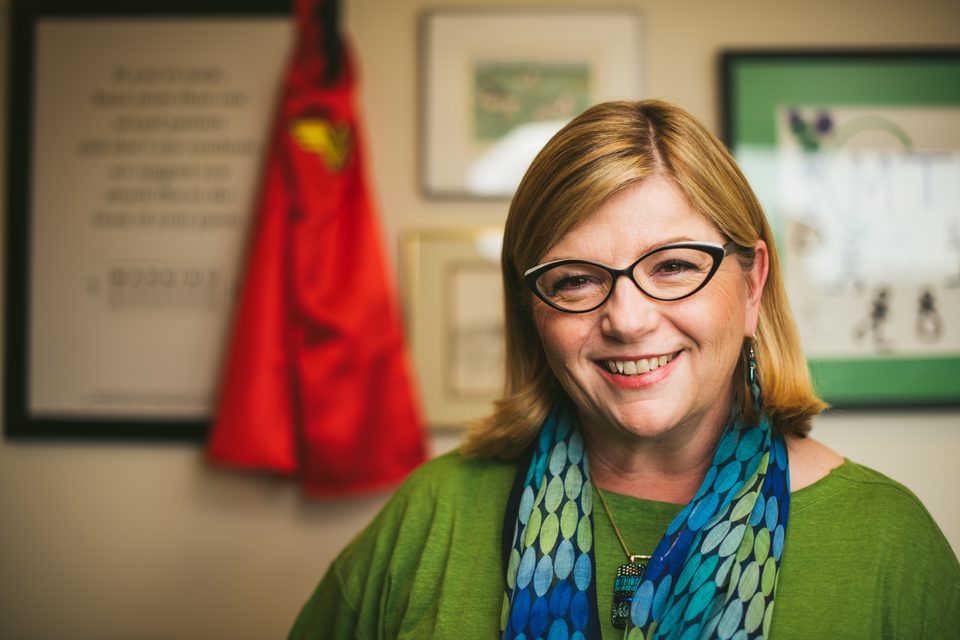Dr. Sharon Hillier: Empowering Women in the Developing World

Arming the world’s most vulnerable women against HIV – while advocating for women in all aspects of health research
Our work is really trying to even the playing field — to give ALL women tools they control, that they use, that can empower them to take care of themselves.
Dr. Sharon Hillier
Dr. Sharon Hillier is not afraid of tackling some of society’s most pressing problems head on. Whether the issue at hand is scientific — such as HIV prevention, previously undiscovered microbes, or even the bubonic plague — or cultural, such as sexual mores and taboos, Hillier believes in speaking her mind, in the clearest terms possible.
“Scientists have this bad habit, like any other discipline: We use our own language, and that locks other people out,” she says.
But it doesn’t have to be that way, she says: “All science does is ask and answer questions in a very careful way.” And scientists need to advocate for their work and translate it for people to more fully understand, she adds.
“Women everywhere are exactly the same. What they want to know is: ‘Is this safe? Is this a good thing for me to do?’” Hillier notes.
Such has been the nature of Hillier’s approach since her early days as a post-doctoral fellow in the early 1980s. The daughter of a dairy farmer and a nurse, Hillier was a self-described “hardcore bacterial physiologist” studying the bubonic plague when she had her first professional epiphany at a medical conference in Seattle.
She listened as a group of senior investigators — all men — as they discussed whether women who complained of vaginal itching were suffering from psychiatric problems or sexual repression due to religious beliefs.
“These guys had no clue, really, about what’s going on with women when they have these problems,” she says. It was then that she realized: “Women need to be at the table. Because when men sit around talking about women’s problems, they miss the boat.”
When Hillier decided to specialize in reproductive infectious disease, only one or two other microbiologists in the country were in the field at the time. (Today, she proudly notes, there are more than 100 — about half of whom are women.) Her decision happened to coincide with the height of the HIV mystery, when science did not know what caused the disease or how it was spreading. Because U.S. cases were most commonly found in gay men, denial persisted that the disease could impact people engaging in heterosexual sex.
Meanwhile, in Africa, an HIV epidemic was quietly mounting among heterosexual women. Her interest piqued, Hiller saw what was happening first hand when she traveled to South Africa to deliver a talk on infectious diseases in the mid-1990s. It was then, she says, that she experienced her second professional epiphany, at a clinic filled with the horrifying scene of scores of HIV-infected women delivering infected babies, and seemingly no answers in sight.
“I remember standing there and thinking to myself, ‘We’re going to look back in history and see this as the second great Holocaust,’” she recalled. “We are counting how many people are getting infected, and we’re not doing anything real to solve it.”
Viewing the devastation, she turned her life’s work to figuring out what put women at risk, and what interventions could change their fate. Hillier now spends about a month every year traveling — particularly in Africa, where HIV infection rates among women remain high — and developing anti-microbial products that allow women to take control of their health, even in cultures where sexual power is tilted decidedly in favor of men.
For 20 years, her research team has focused on a collaborative effort to develop an antimicrobial vaginal ring that prevents HIV infection. (Another version also acts as a contraceptive.) Now in various stages of regulatory approval, the ring may be a game changer for women who will be able, for the first time, to take sole control of protecting themselves instead of relying on a male partner to wear a condom.
Sometimes, the stakes can be devastatingly high. Hillier recalls asking a married 25-year-old African woman how she liked using the ring. The woman, who was convinced that her husband and his other two wives were cheating, feared that she was vulnerable to HIV infection. But in her culture, if she left the marriage, she would be forced also to abandon her children. The ring gave her the ability to stay with her husband and children without, at least, risking the disease.
“I’ve learned in my travels and in collaborations with women around the world that not all women have the same opportunities I’ve had in my life,” she says. “Our work is really trying to even the playing field — to give ALL women tools they control, that they use, that can empower them to take care of themselves.”
Be the First to Know
Get the latest research, news, events, and more delivered to your inbox.